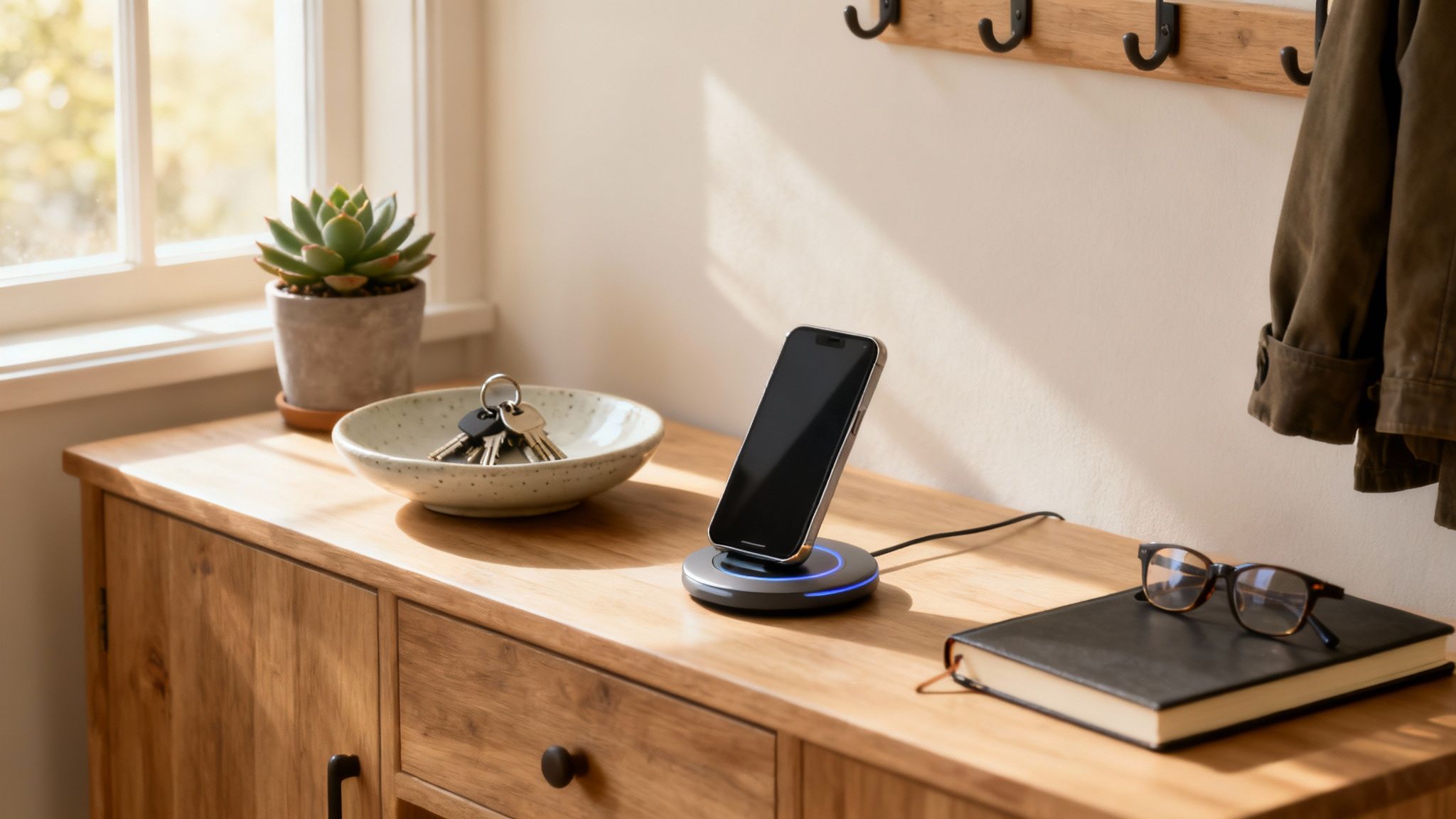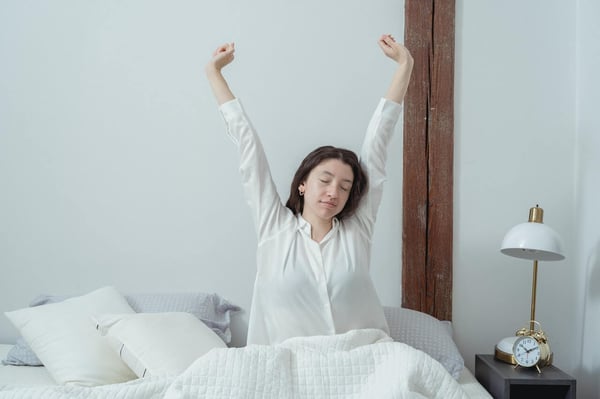My morning routine is a fragile ecosystem. If I skip the gym or doom scroll for too long, my whole day gets thrown off, putting me in waiting mode while I figure out how to salvage my morning. It often means I will be much less productive for the entire day.
Implementing a low-dopamine morning routine helps the rest of the day go smoother. Let’s dive in and learn how to make your morning work with your ADHD.
Too long; didn’t read
- The ‘low-dopamine morning routine’ is about maintaining low dopamine levels first, embracing a slower start, and reducing overwhelm.
- People with ADHD can be well-suited to this routine, but it’s also proved popular amongst people with seasonal affective disorder (SAD).
- You should: Drink water, access natural light, eat a high-protein breakfast, and complete a low-stress task, like unloading the dishwasher.
- You should not: Go on your phone or drink caffeine.
What is a low-dopamine morning routine?
The ‘low dopamine morning routine’ involves maintaining low dopamine levels in the morning to embrace a slower start.
It’s gained popularity amongst ADHDers, but it’s also been embraced by people who have SAD or those who want to improve their relationship with mornings.
ADHDers might struggle to stick to new routines, but we’re highly efficient at creating them.
People with ADHD can benefit from the structure that morning routines provide, boosting productivity, helping to keep track of the day, and maintaining a regular schedule for taking medication, eating, and exercising.
Why is low dopamine a good thing?
Maintaining low dopamine can help ADHDers to feel more centered, reducing overwhelm and increasing mental clarity.
Need a refresher? Dopamine is a neurotransmitter or a chemical messenger responsible for transmitting signals between brain cells. Often referred to as the “pleasure chemical,” it plays a vital role in reward and movement regulation in the brain.1 Studies suggest that ADHD brains operate on a dopamine deficit.2
However, the brain – ADHD or not – isn’t built to constantly operate on low dopamine levels because persistently low dopamine can make you susceptible to adverse side effects.
Dopamine levels that are too low can cause:3
- Feeling unmotivated
- Mood swings
- Memory loss
- Concentration problems
- Sadness
- Drowsiness
Hence, the low-dopamine morning routine is meant for the morning only.
Low-dopamine morning routine: mix and match activities
Check out our low-dopamine activities below and choose which ones to add to your own low-dopamine morning routine!
1. Drink water. (Yes, seriously.)
If you’ve gone eight hours without water, you will probably wake up feeling a little dehydrated.
Recharging those H20 levels increases energy levels, boosts metabolism, helps to ease pains, fight toxins, and maintain a clear complexion.4
💡 Pro tip! If drinking plain water feels boring to you, why not add a slice of lemon?
2. Seek natural light within 30 minutes of waking up.
Accessing natural light within 30 minutes resets the body’s inner sleep clock, telling the brain it’s time to wake up.
Sunlight also helps generate serotonin, a neurotransmitter widely thought to positively influence mood, emotion, and sleep.
3. Eat a high-protein breakfast.
Breakfast is all about fueling your day. If you start with sugar-intense foods, you’ll crash and burn. The rule here is protein, protein, protein!
Examples of high-protein foods:
- Greek yogurt
- Peanut butter
- Low-fat meats
- Cottage cheese
- Eggs
- Oats
🤯 Did you know? Protein-rich foods also take longer to digest, keeping you full for longer.
🍳 If eating regularly is challenging for you, check out our meal-planning tips for ADHDers.
4. Do a low-stress task or two before diving into more intense tasks.
If you start your day with an intense task, you’ll buzz off the walls from that dopamine hit.
Likewise, low-stress tasks will ease your brain into the day.
Examples of low-stress tasks to add to your routine:
- Make your bed
- Low impact exercises, like going for a walk or stretching
- Make a task list for the day
- Write in your journal
- Organize your workspace (if you work from home)
- Wipe down your kitchen counters
- Put away the dishes
5. Stay off your phone (and computer) for at least an hour after you wake up.
Don’t treat your phone – the ultimate dopamine-enhancer – like the morning newspaper. Avoiding it for at least an hour helps maintain low dopamine levels and sets positive, healthy intentions for the day.
Swapping out your phone for a traditional alarm clock will reduce your dependence on your smartphone.
If you opt for this route, charge your phone elsewhere. Not only will this help build positive habits in the morning, but it’ll also train your brain to associate your bedroom with sleep.
You also won’t be able to spend hours scrolling before bed, enforcing a productive nighttime routine and a morning one.
💡 Pro tip! Use an alarm clock with a built-in SAD lamp.
6. Delay your morning coffee.
If you take medication for your ADHD, chances are you’ve been told to drastically decrease your caffeine intake or completely eliminate it from your diet.
However, if you do consume caffeine, you should avoid it for the first 90 minutes. It might seem unbearable, but delaying your first dose will stop you from crashing too early.
Try decaf: It’ll provide that warming, cozy feeling, regardless.
Sources
1 Oxidative Medicine and Cellular Longevity | The Role of Dopamine and Its Dysfunction as a Consequence of Oxidative Stress
2 Neuropsychiatric Disease and Treatment | Attention-deficit-hyperactivity disorder and reward deficiency syndrome
3 Psychiatry and Clinical Neurosciences | Transient and sustained effects of dopamine and serotonin signaling in motivation-related behavior
4 Nutrients | Narrative Review of Hydration and Selected Health Outcomes in the General Population







